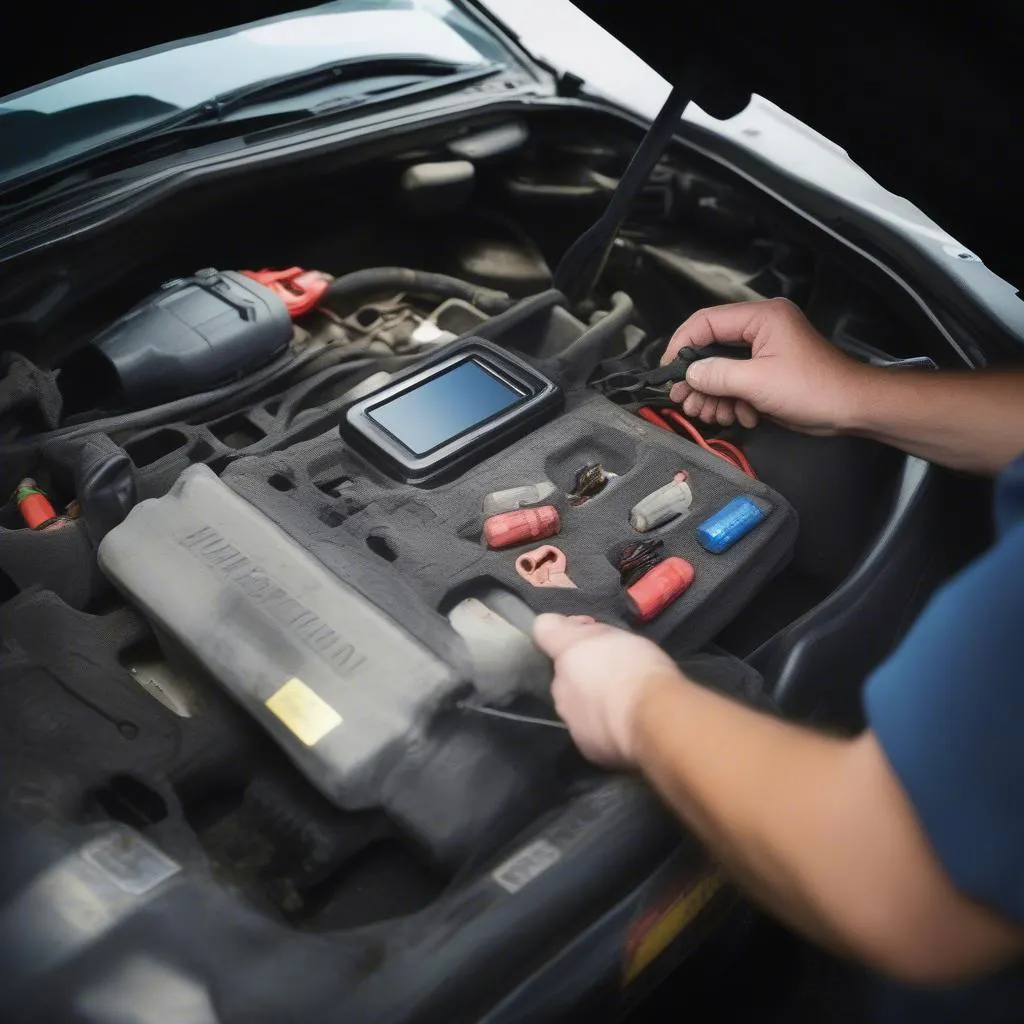The Golf MK6 is known for its reliability and performance, but like any car, it can experience issues, and the dreaded brake pad warning light is one of them. If you’re seeing this warning on your dashboard, it’s crucial to understand the causes and potential solutions. This guide will help you navigate the issue and take the necessary steps to address it.
Understanding the Brake Pad Warning Light
The brake pad warning light indicates that your brake pads are nearing their wear limit. This light is triggered by a sensor embedded within the brake pad assembly. When the sensor contacts the brake disc, it sends a signal to the car’s computer, illuminating the warning light.
Common Causes of the Golf MK6 Brake Pad Warning Light
Several factors can contribute to triggering the brake pad warning light on your Golf MK6:
1. Normal Wear and Tear
Over time, brake pads wear down due to friction generated during braking. This is a natural process, and eventually, they’ll need to be replaced.
2. Aggressive Driving Habits
Driving aggressively, such as frequently braking hard or driving at high speeds, can accelerate brake pad wear.
3. Poor Quality Brake Pads
Using inferior quality brake pads can lead to premature wear and trigger the warning light sooner.
4. Faulty Brake Pad Sensor
While rare, the sensor itself might be faulty, causing the warning light to illuminate even if the brake pads are still in good condition.
How to Diagnose and Address the Brake Pad Warning Light
Here’s a step-by-step guide to diagnose and address the brake pad warning light on your Golf MK6:
- Check the Brake Pads: Visually inspect the brake pads on all four wheels. If the brake pads are worn down to the metal backing, they need to be replaced immediately.
“If you see metal on the brake pad, it’s time to replace them. Don’t wait or you risk damaging the rotors.” – John Smith, Automotive Technician
-
Verify Sensor Functionality: If the brake pads have enough material left, the sensor might be faulty. You can test the sensor by disconnecting it from the brake pad assembly and using a multimeter to check for continuity.
-
Inspect the Rotors: The brake rotors should also be inspected for wear and tear. If they are scored or warped, they might need to be replaced or resurfaced.
“A worn-out rotor can cause uneven braking and increase brake pad wear.” – Mary Jones, Automotive Technician
- Professional Inspection: If you’re unsure about the cause of the warning light, it’s best to have the car inspected by a qualified mechanic.
Solutions for the Brake Pad Warning Light
The solution to the Golf MK6 brake pad warning light depends on the cause. Here are some common solutions:
1. Replace Brake Pads
If the brake pads are worn down, they need to be replaced with new ones. Ensure you use high-quality brake pads suitable for your Golf MK6 model.
2. Replace Brake Pad Sensor
If the sensor is faulty, it needs to be replaced.
3. Resurface or Replace Rotors
If the rotors are worn or damaged, they might need to be resurfaced or replaced.
FAQ
Here are some frequently asked questions regarding the Golf MK6 brake pad warning light:
1. How long can I drive with the brake pad warning light on?
It’s not recommended to drive for long periods with the brake pad warning light on. Once the light illuminates, you should schedule an inspection and replacement as soon as possible.
2. Can I replace the brake pads myself?
While replacing brake pads is a relatively straightforward DIY project, it’s essential to have the necessary tools and experience. If you’re unsure, it’s best to have a qualified mechanic do it.
3. How often should I replace brake pads?
Brake pad lifespan varies depending on driving habits, road conditions, and pad quality. However, you should typically replace brake pads every 20,000-30,000 miles.
4. What are the signs of worn-out brake pads?
Apart from the warning light, you might notice a squeaking or grinding sound when braking, a spongy brake pedal, or a longer stopping distance.
5. How can I prevent premature brake pad wear?
You can prevent premature brake pad wear by driving smoothly, avoiding aggressive braking, and using high-quality brake pads.
6. What happens if I ignore the brake pad warning light?
Ignoring the warning light can lead to dangerous driving conditions. Worn-out brake pads can cause the car to take longer to stop, potentially leading to accidents.
By understanding the causes and solutions for the Golf MK6 brake pad warning light, you can address the issue promptly and ensure the safety of yourself and others on the road. Remember, brake safety is paramount.

